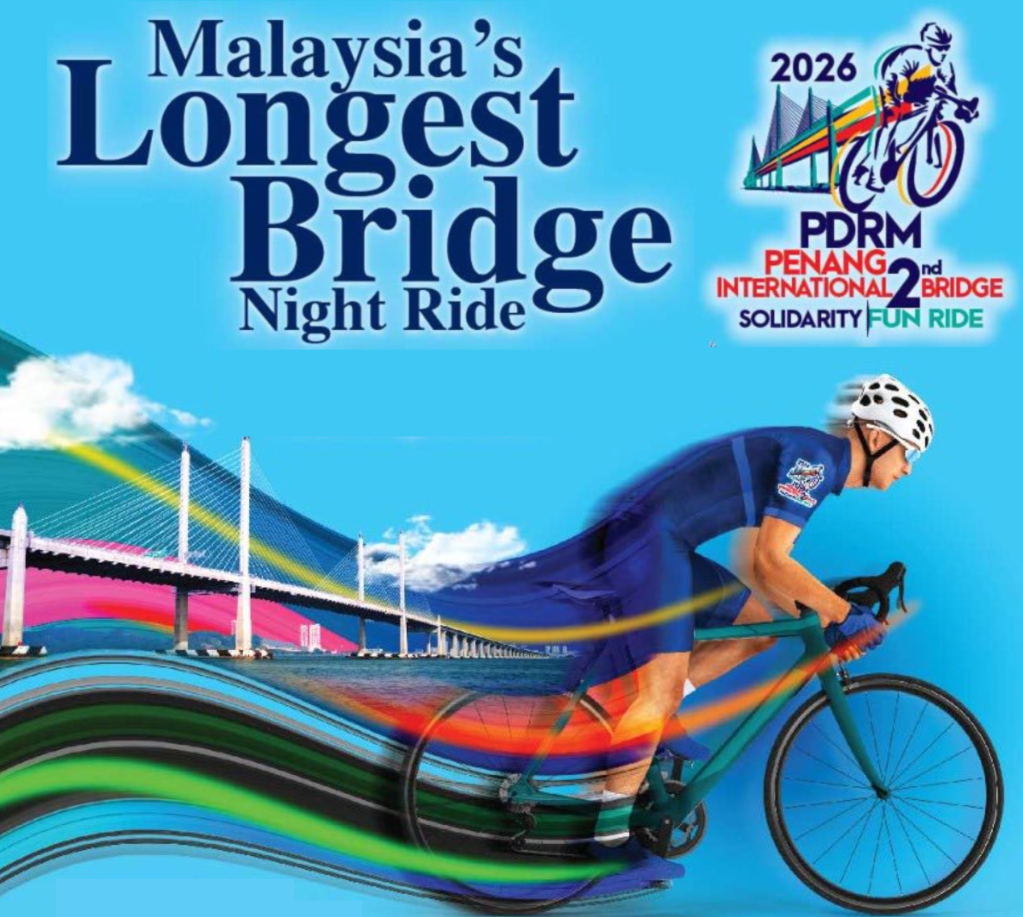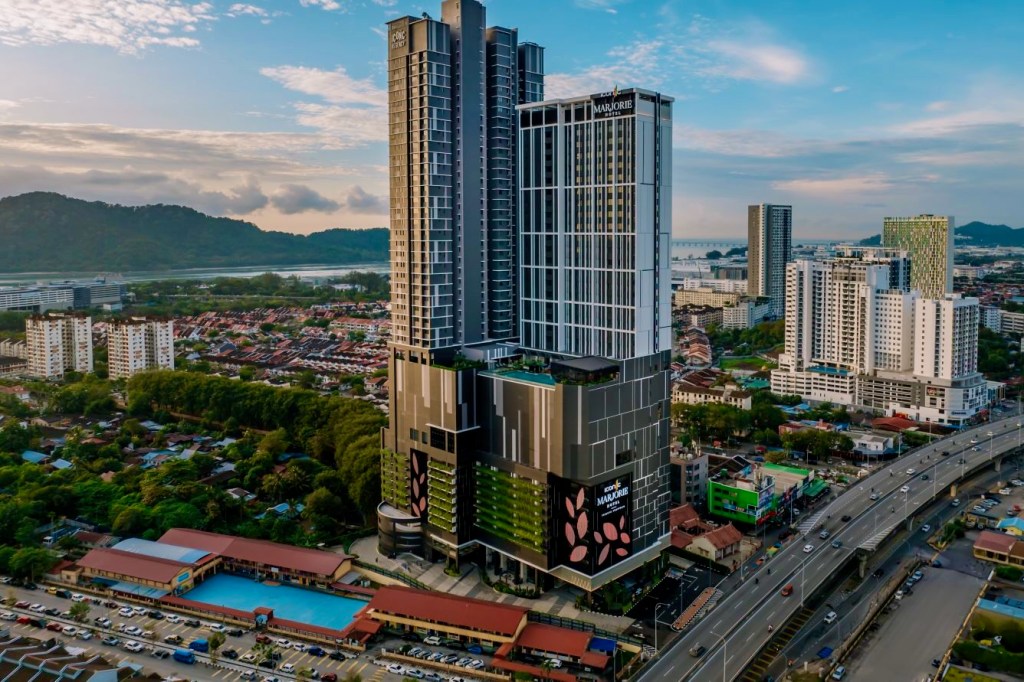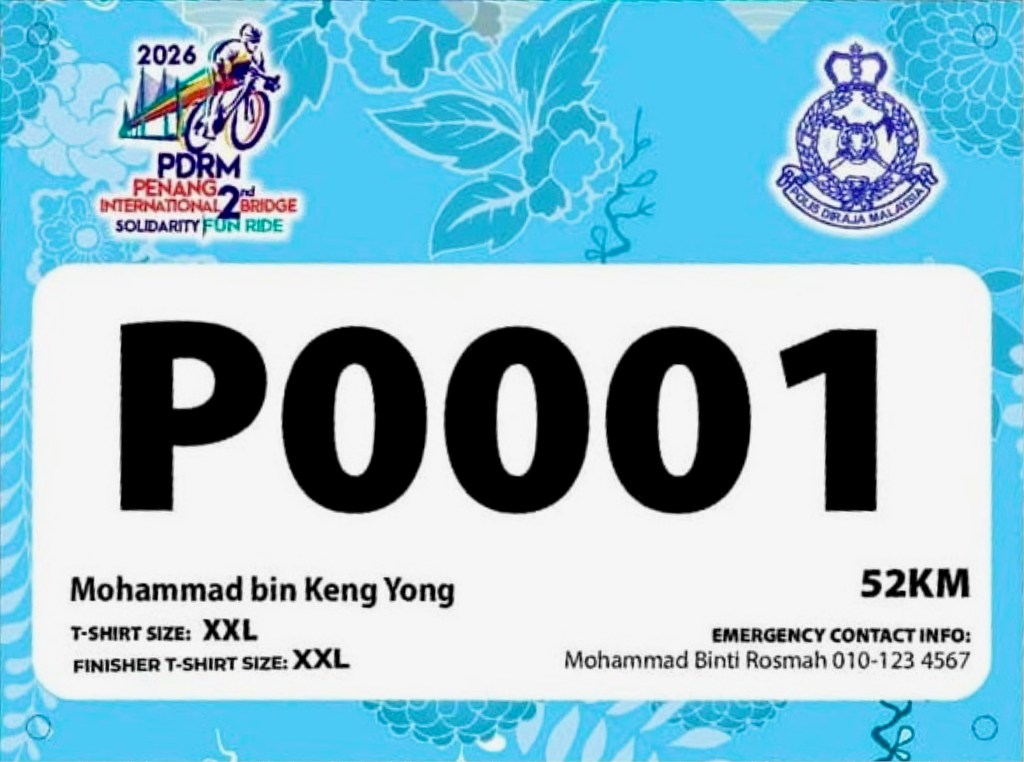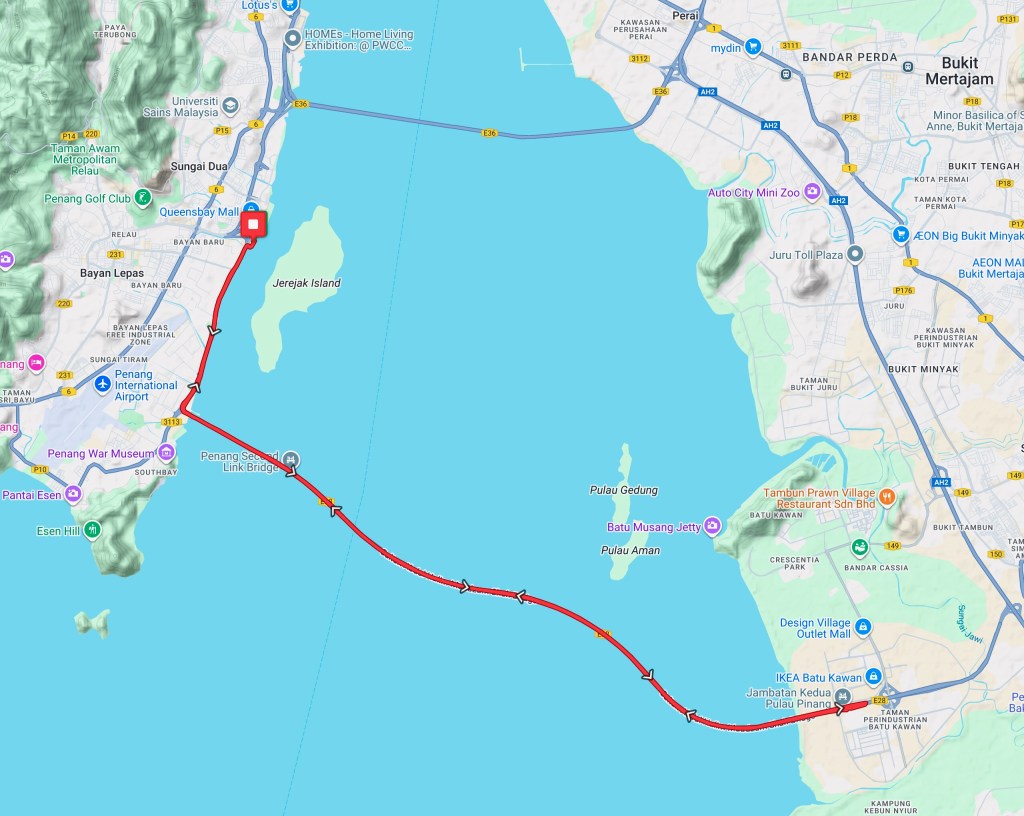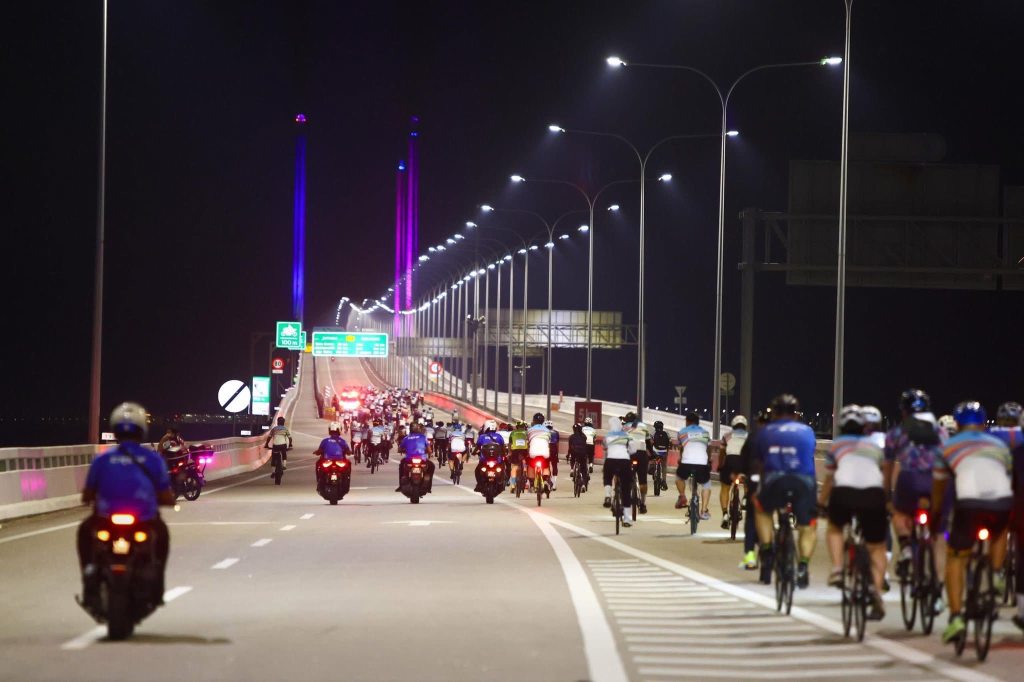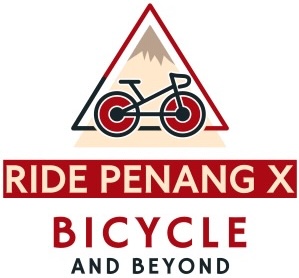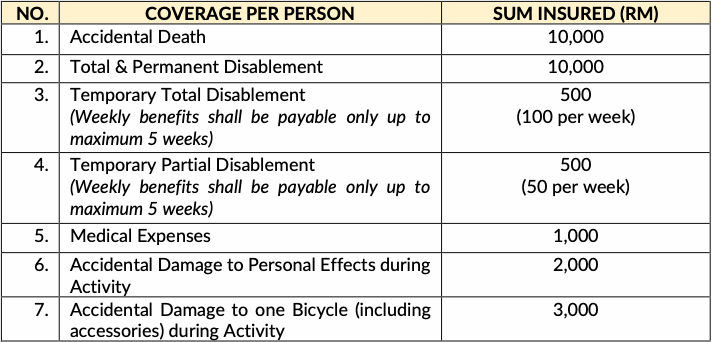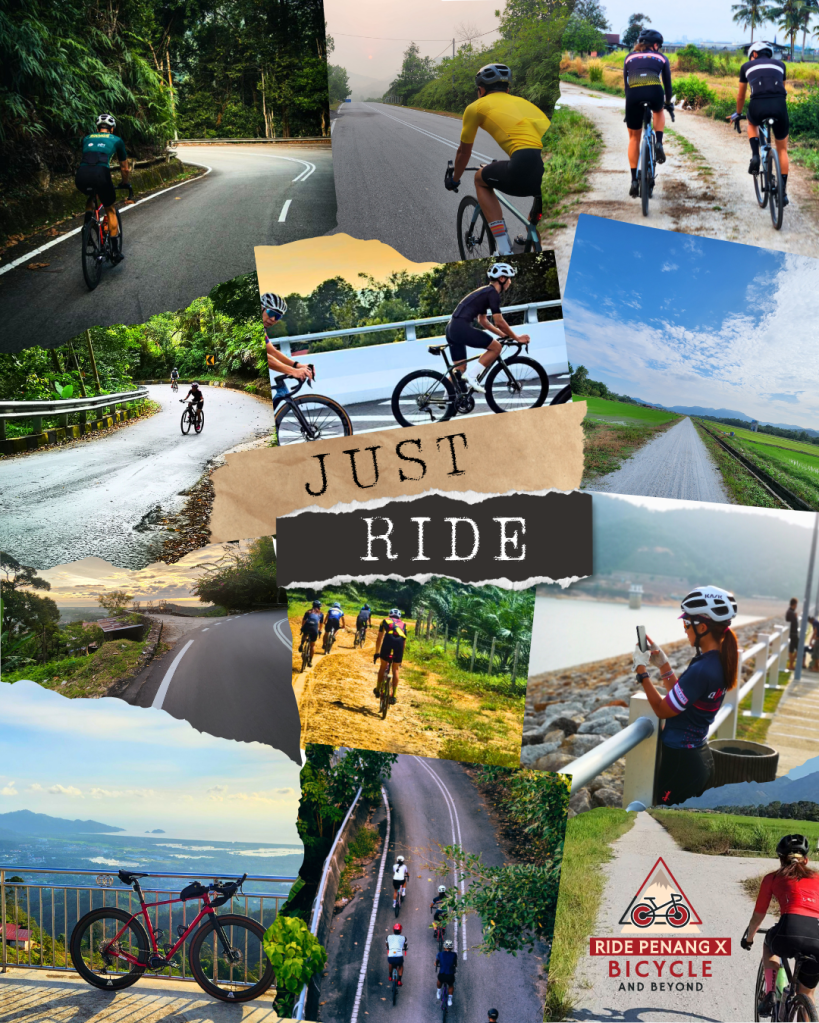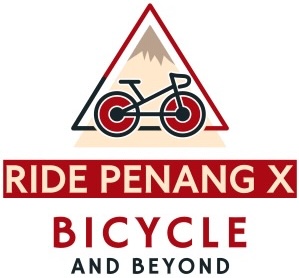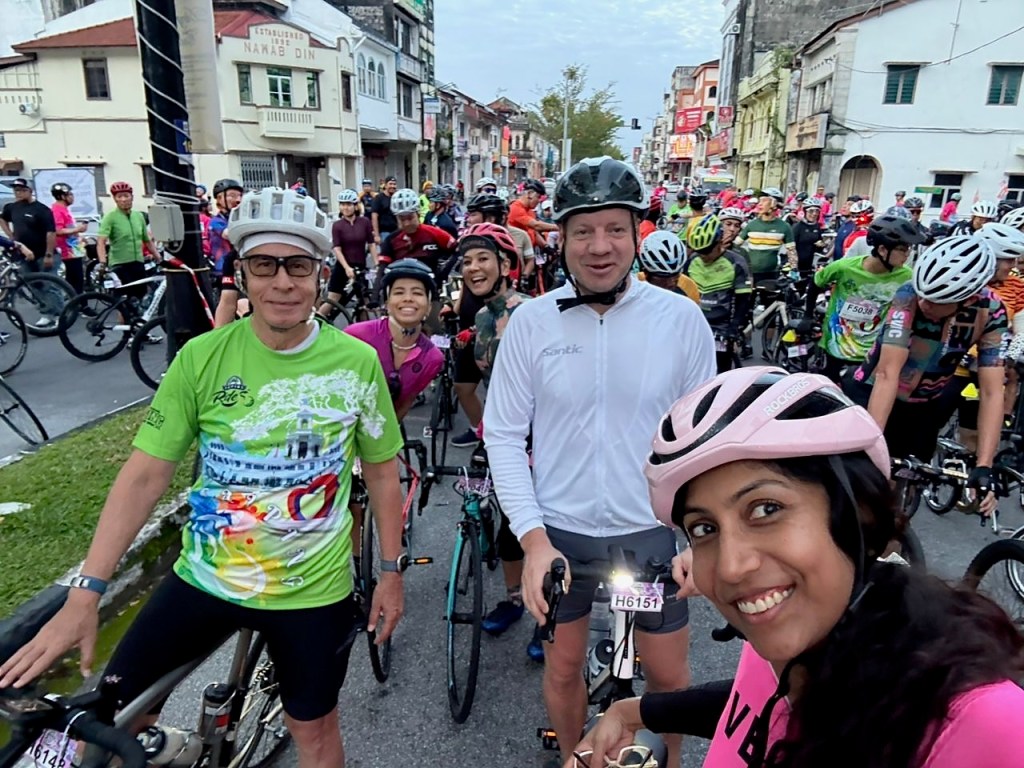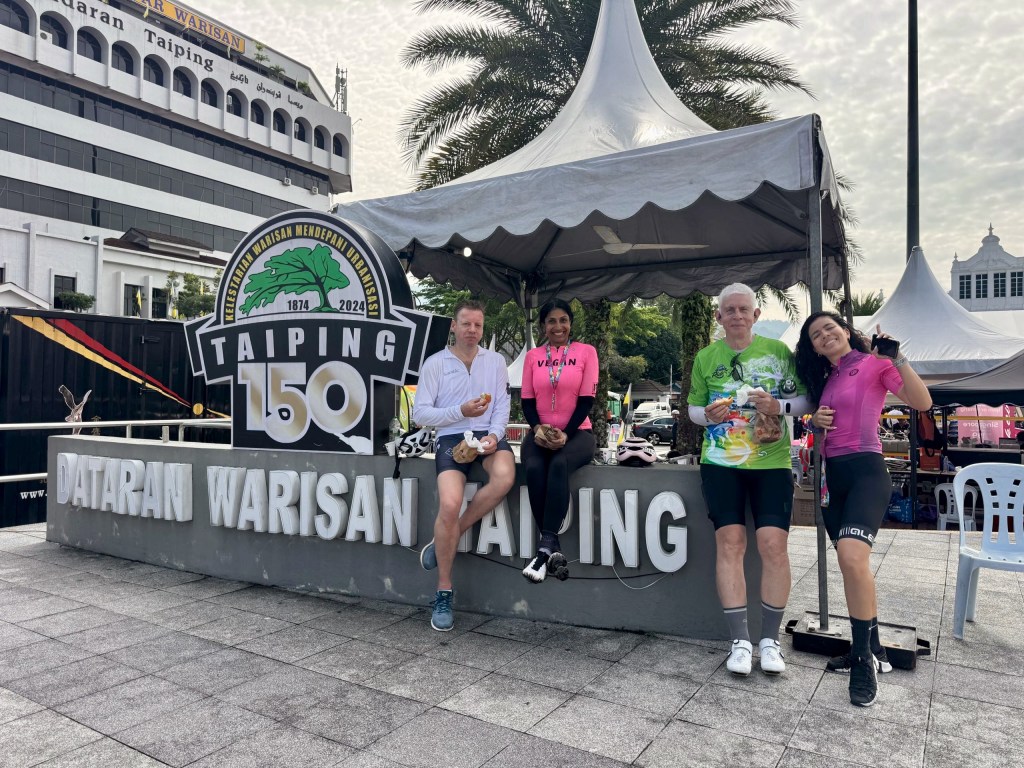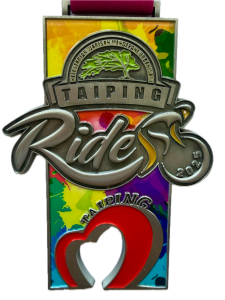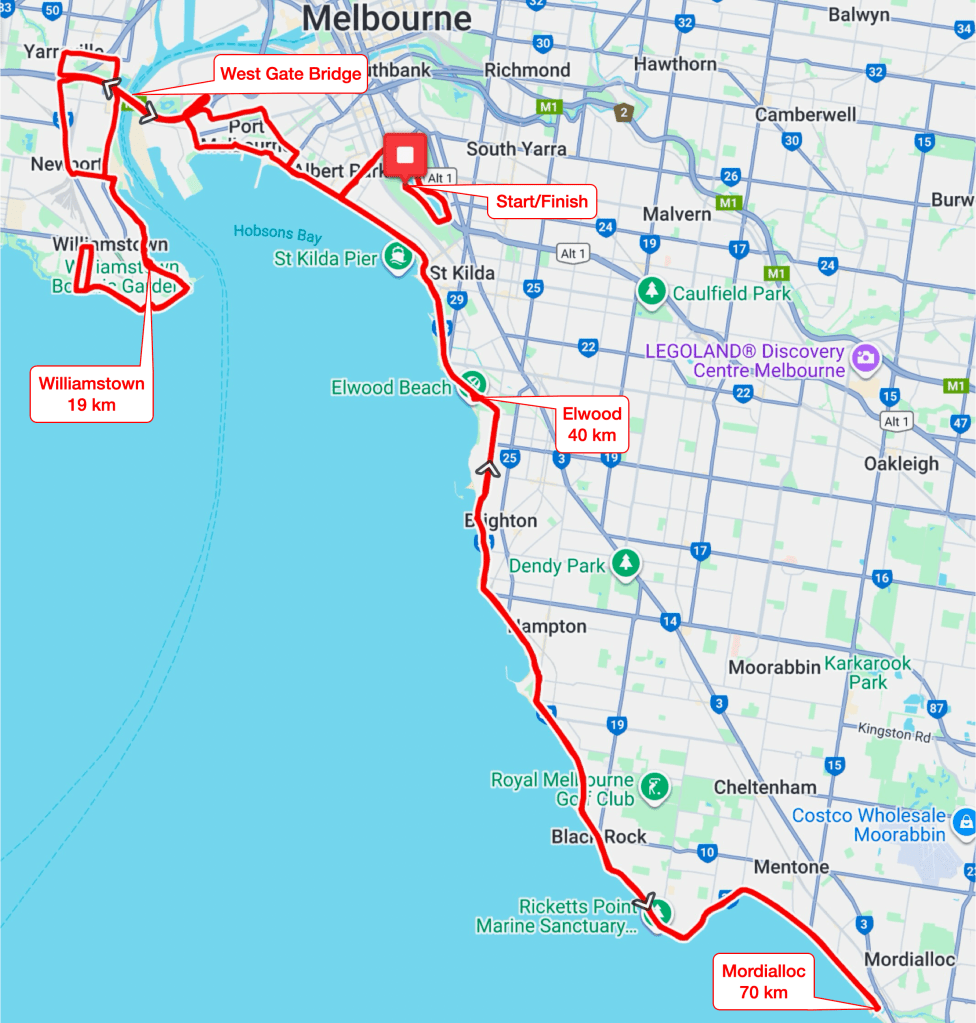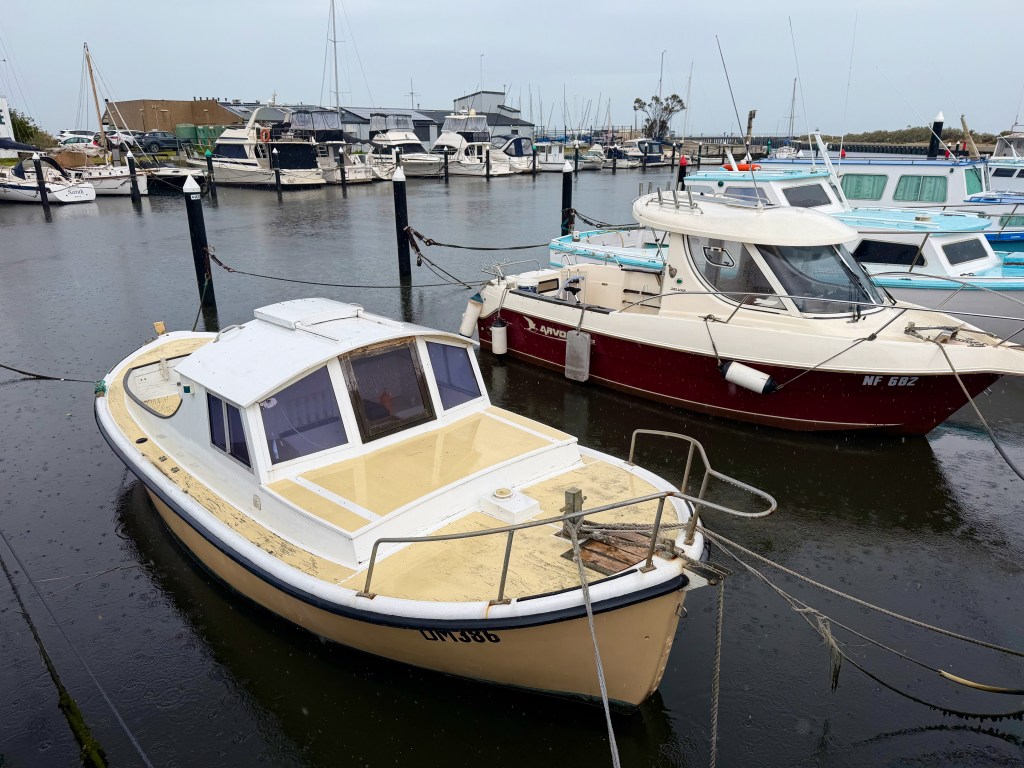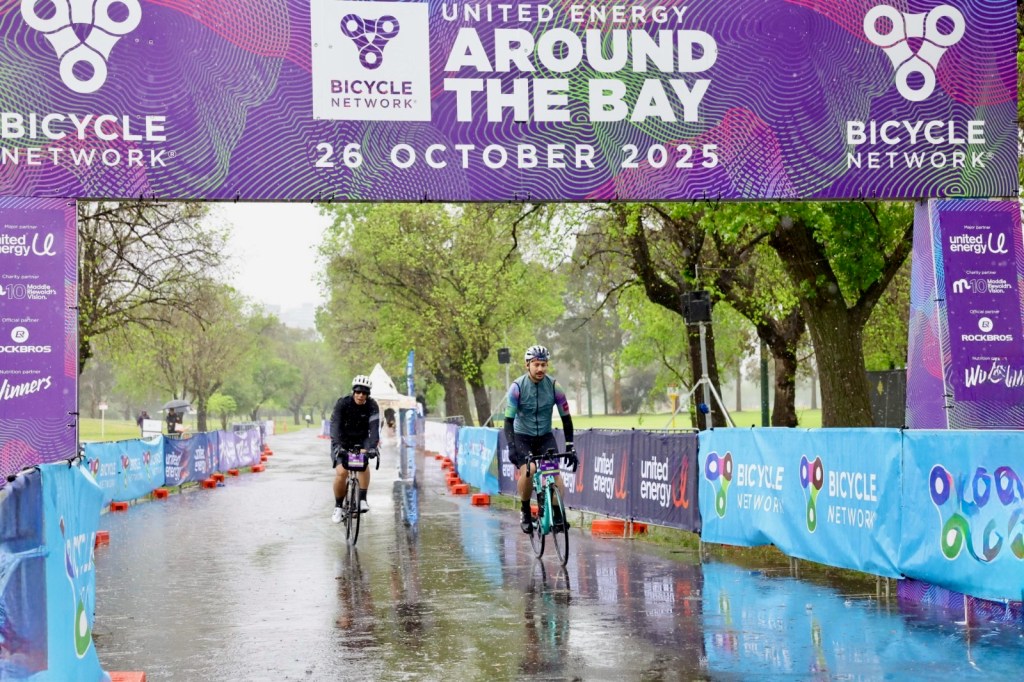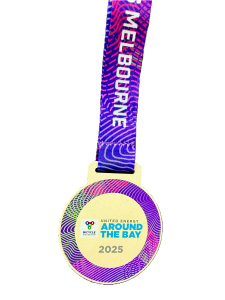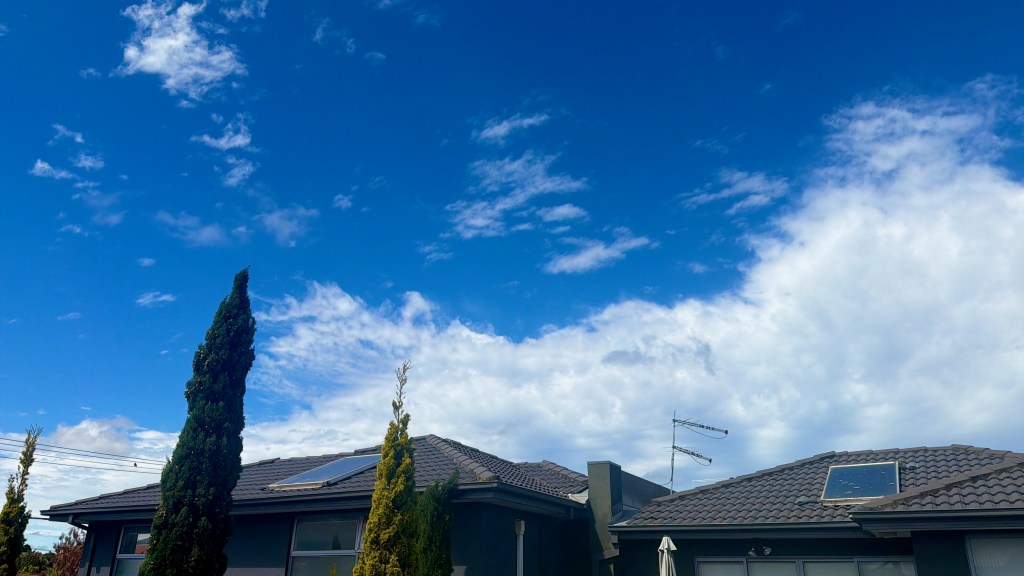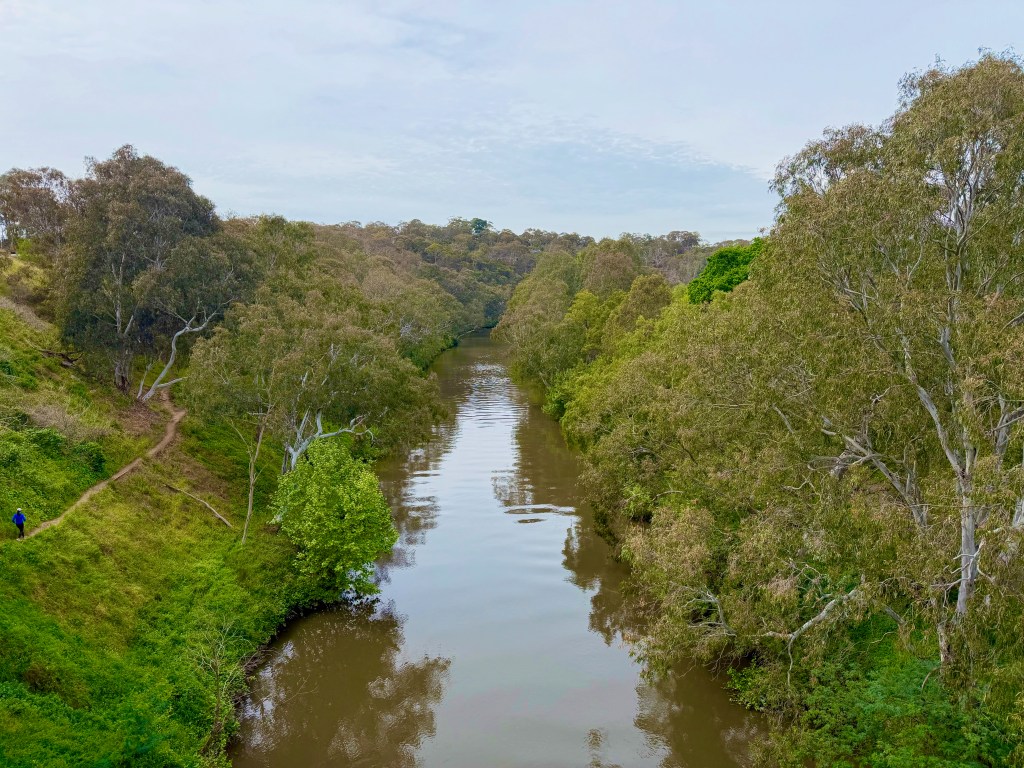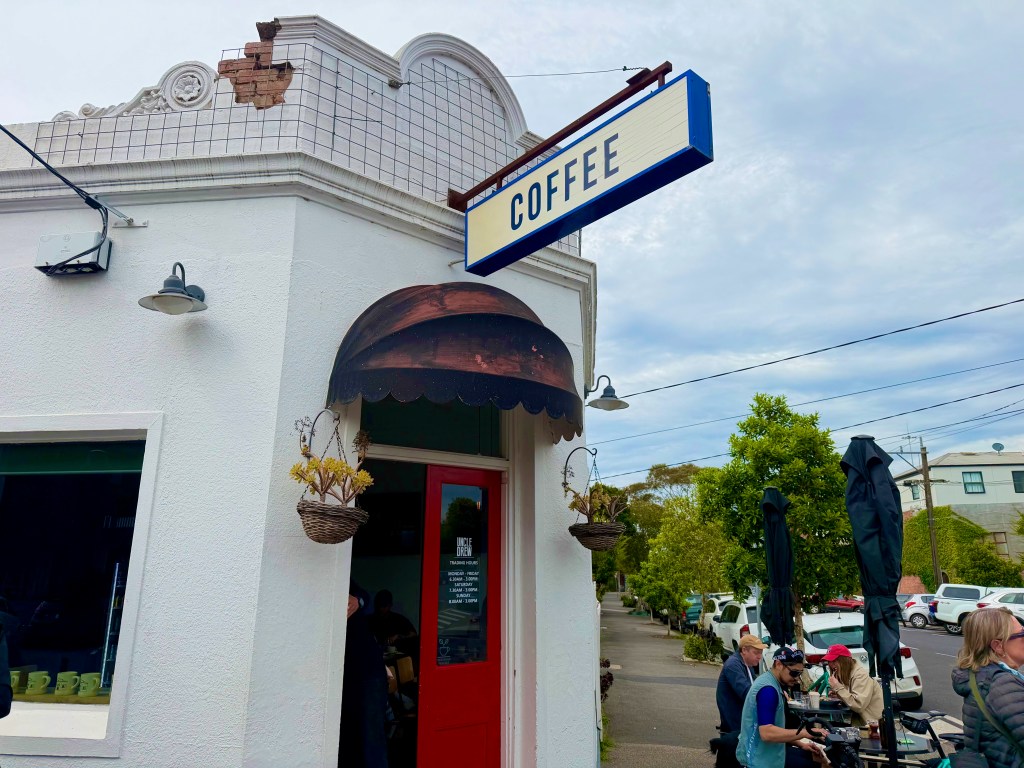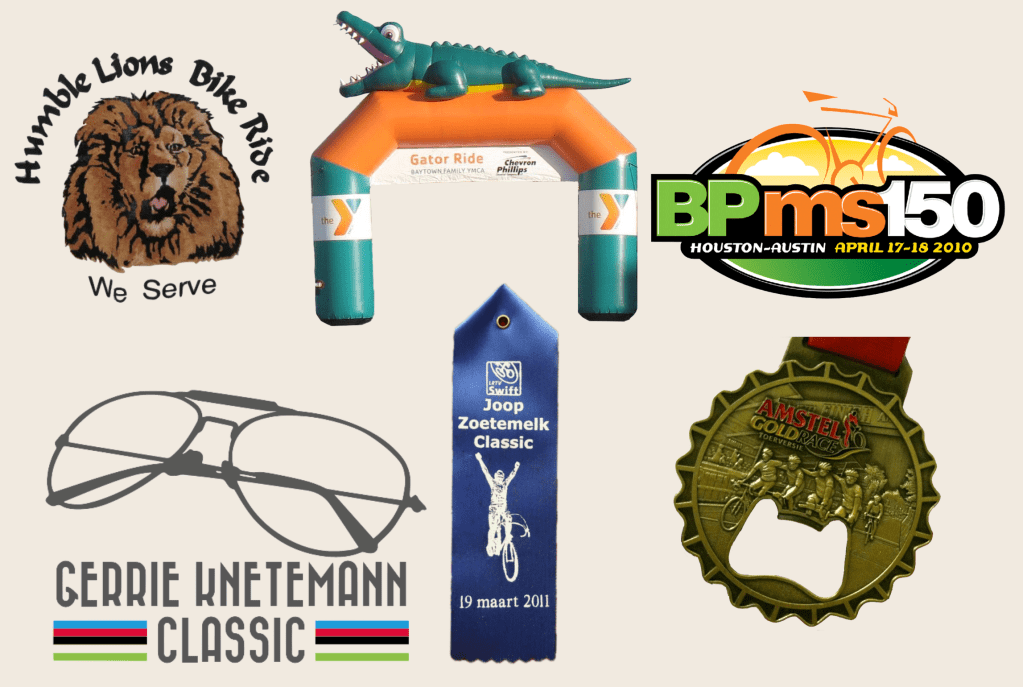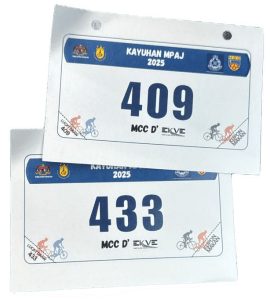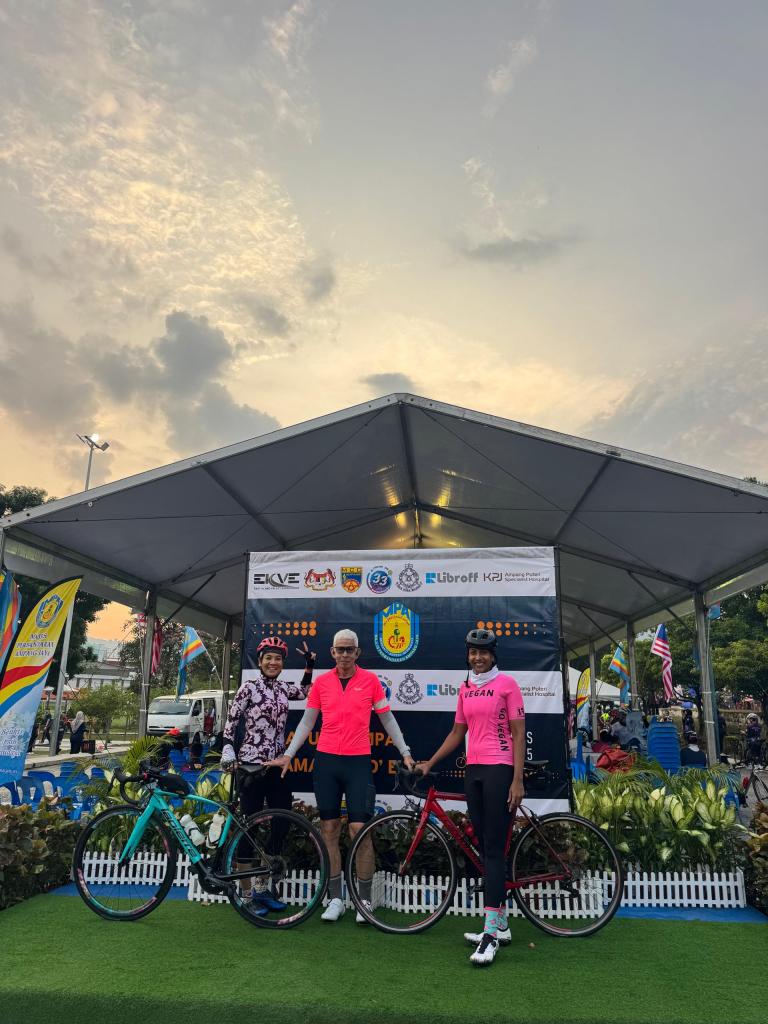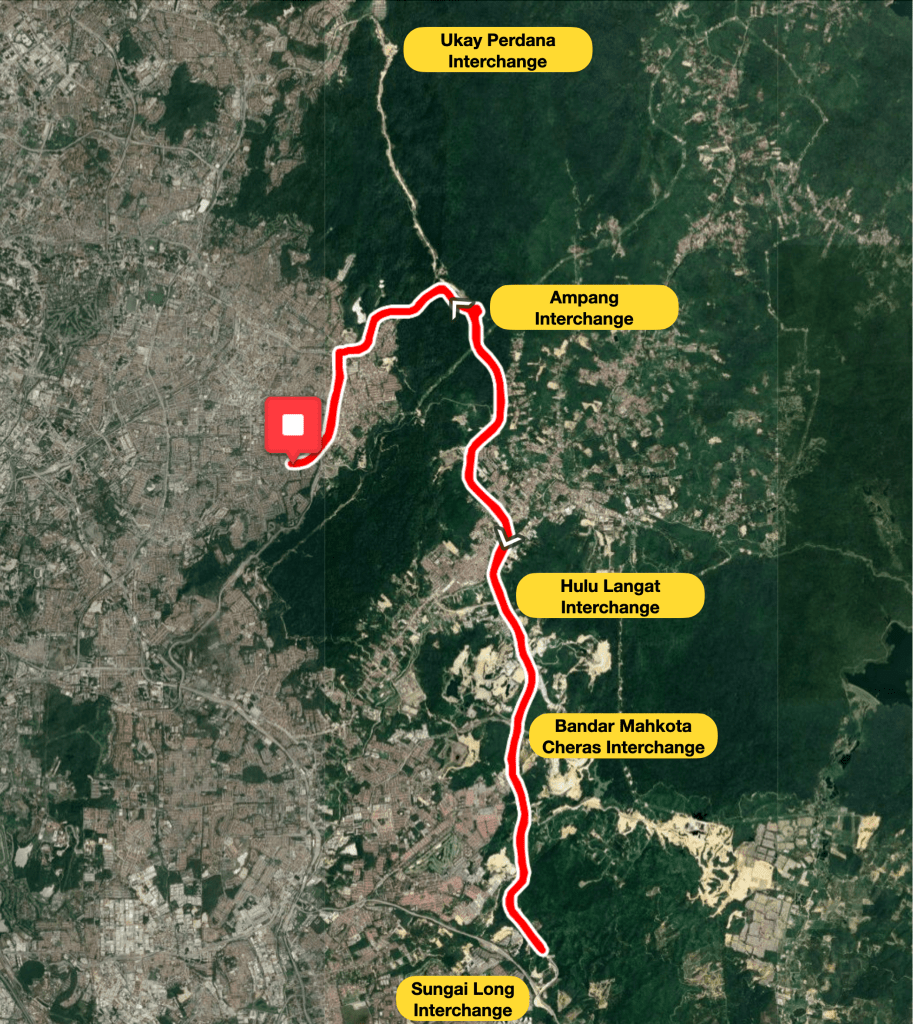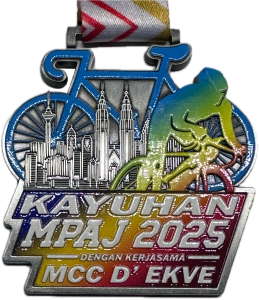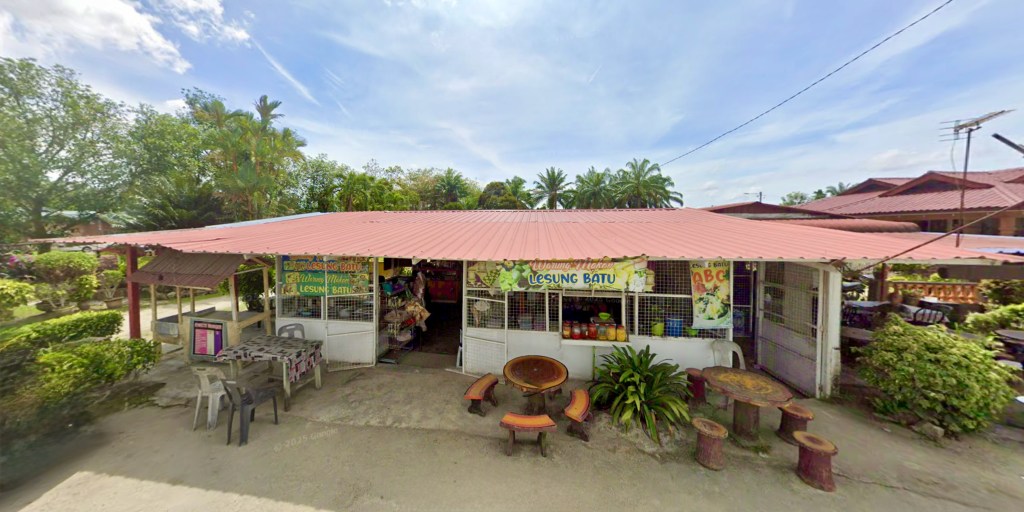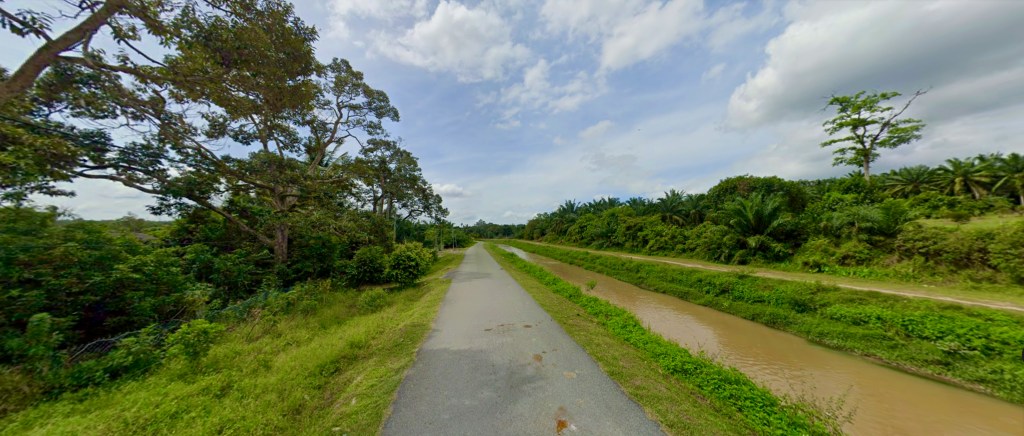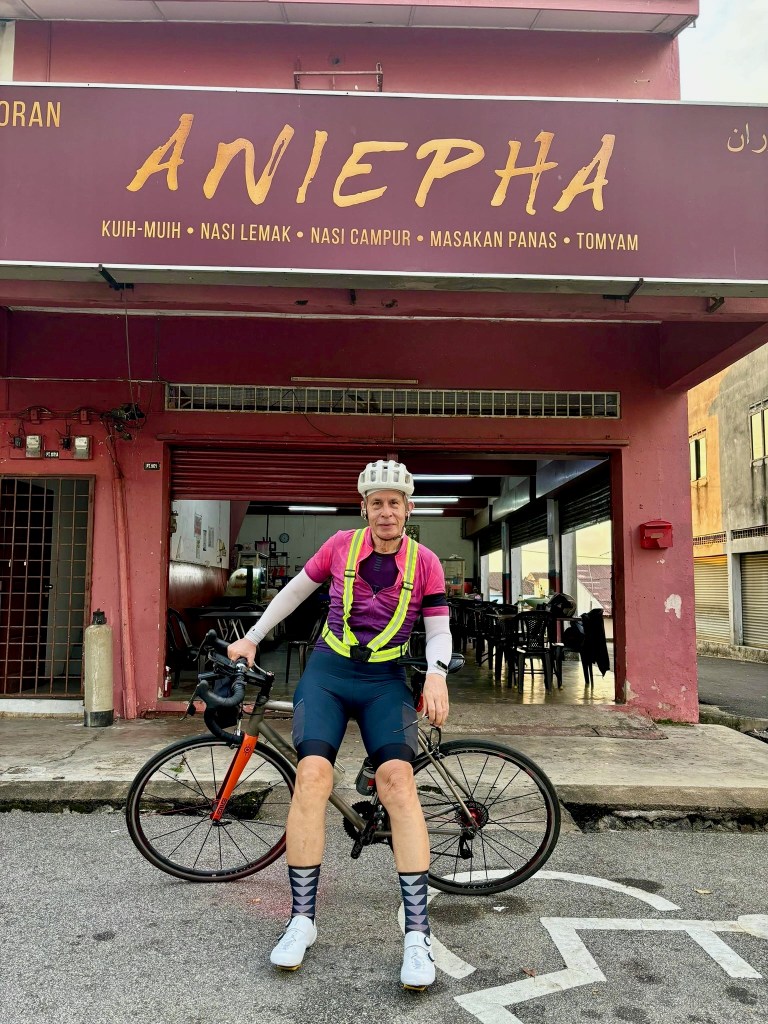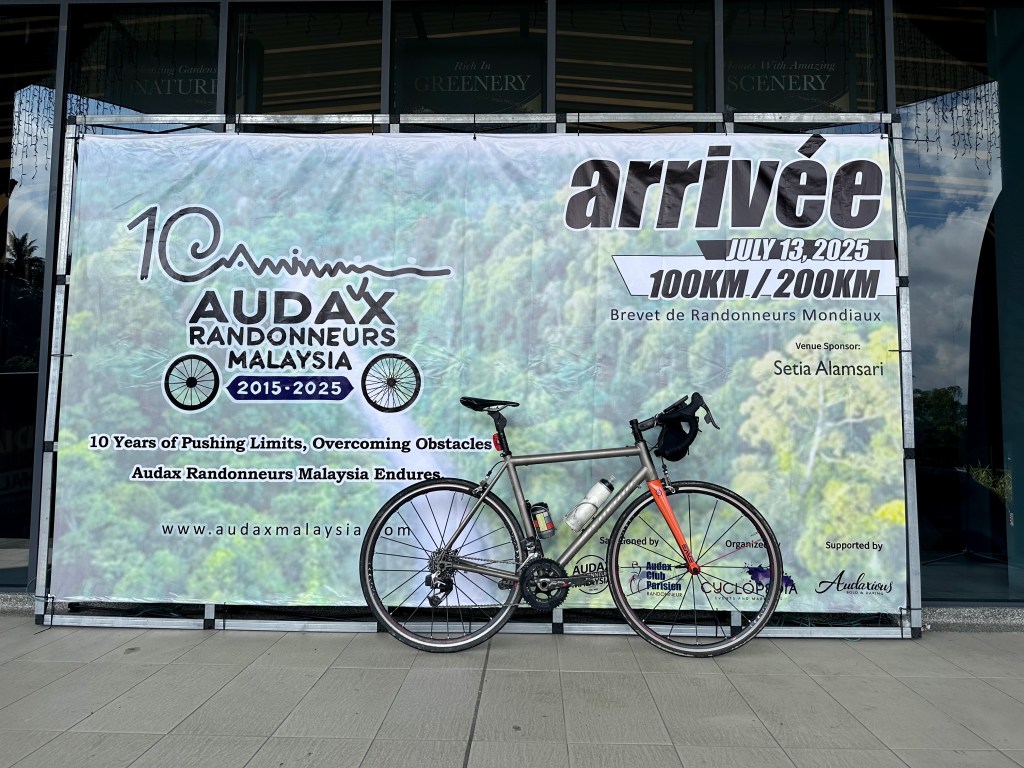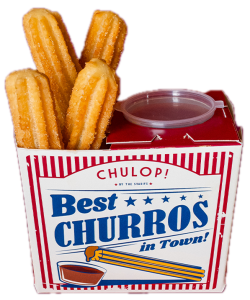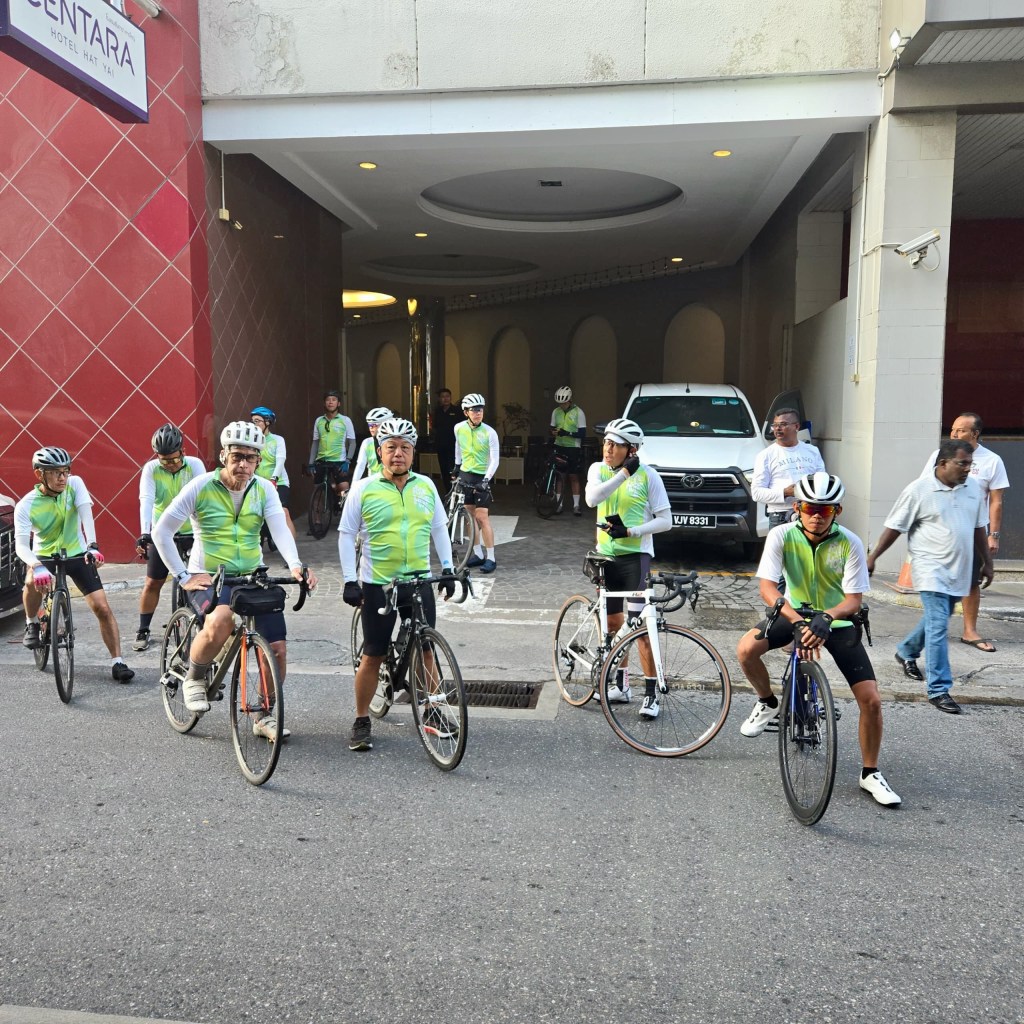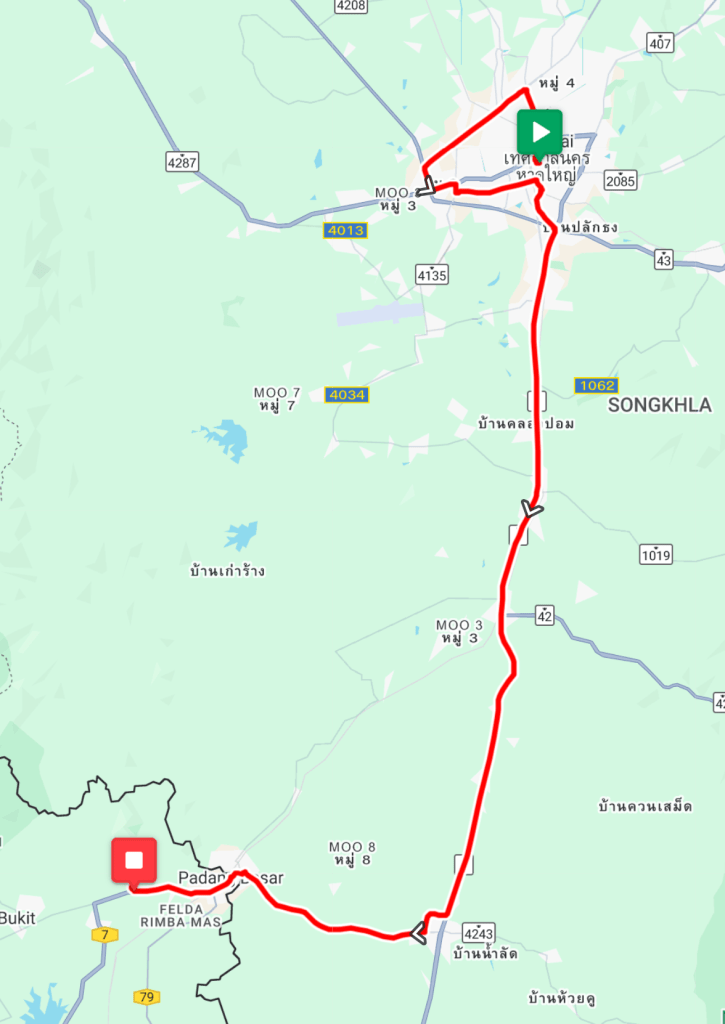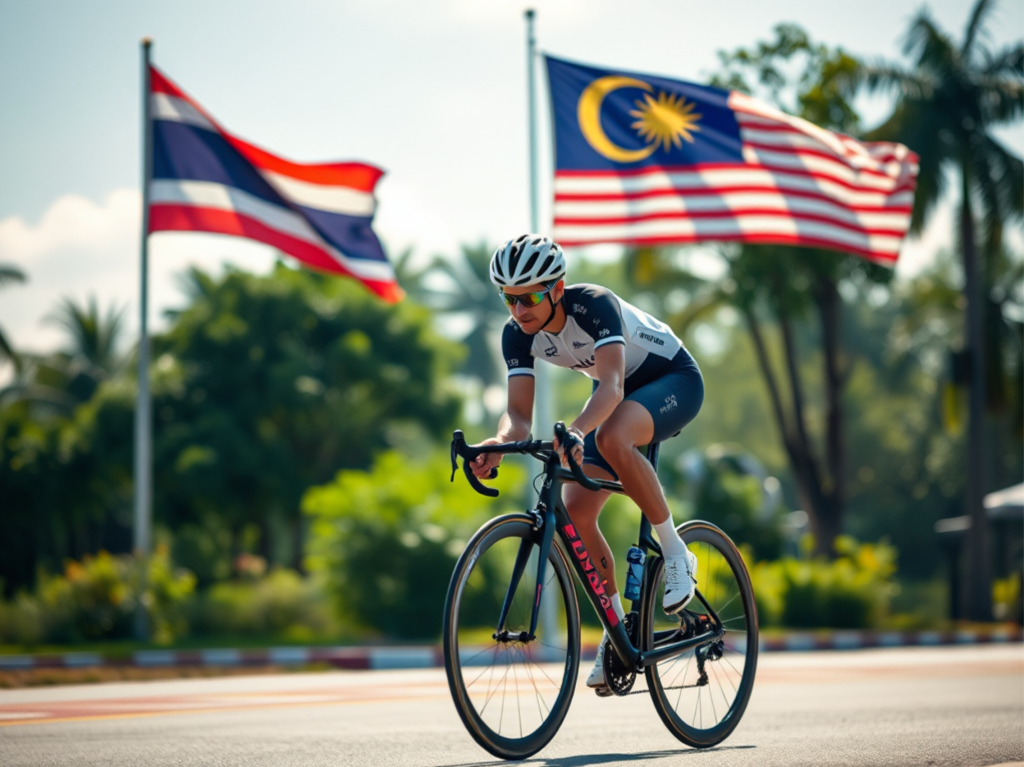The Penang Second Bridge, formally named the Sultan Abdul Halim Muadzam Shah Bridge, was opened on March 1st, 2014. It is 24 km long, with 16.9 km of the structure crossing over water. This bridge was built to ease traffic congestion on the Penang Bridge, which opened in 1985.
The Polis Diraja Malaysia (PDRM) or Royal Malaysia Police in Penang organize an annual ride across the Penang Second Bridge as community outreach programme. The event offers participants a unique opportunity to cycle on the fully closed Penang Second Bridge at night, an experience not typically available. The 2026 edition marks the event’s sixth run.
I registered for this ride in September 2005. As soon as I paid my entry fee, I started looking for a hotel. Penang is an extremely popular holiday destination over the Christmas and New Year period. Leave it too late and a hotel room, especially one close to the ride start point, would be hard to find.
The ride would start at the Queensbay Mall. The Iconic Marjorie Hotel is a 2 km ride from the Queensbay Mall. The mall is visible on the left side of the photograph, just below the hills in the background.
Booking return tickets on the Electric Train Service (ETS) from KL Sentral station to Butterworth was next. My Biker Chick and I decided against driving. The traffic back to Kuala Lumpur on the Sunday after the New Year was sure to be horrendous.
The downside of taking the ETS is the hassle of transporting a bicycle. Baggage storage on the ETS is limited, but I would be able to get my Ritchey Break-Away, in its hard case, onto the train. That would be the first challenge. The next would be in Butterworth, where I would have to wheel and carry the case from the train station to the ferry port and then onto a ferry. Finally I would have to find a taxi or a Grab car big enough for the case to fit into.
That hassle would be worth it given that the ETS ride from Kuala Lumpur to Butterworth is a relaxing three and a half hour journey. Complete with a meal and an in-seat screen with internet access. As compared to a stressful drive of possibly seven hours or more.
All concerns about transporting my bike evaporated when I saw the Ride Penang webpage. I stumbled upon it by chance, and I am so glad that I did. I didn’t have to think about it for long before I booked a road bike and paid for delivery to the Iconic Marjorie Hotel and for pick-up after the event.
The experience the PDRM Penang has gained from organizing five previous Second Penang Bridge rides was evident from the moment regular updates about this year’s event started appearing on Facebook. Announcements about the programme for the day, where to park, how to qualify for a finisher’s medal and the Lucky Draw, etc. was frequent and thorough.
Unlike other events where ride pack collection was possible on just one day, ride pack collection was available on the three days prior to this ride. The collection itself was very efficient. I was impressed with the personalized bib numbers.
Some 2,500 participants from 17 countries gathered at the Queensbay Mall for the 9:30 pm start on Saturday 3rd January 2026.

While waiting we were entertained by the PDRM Penang Band and a group of young drummers.
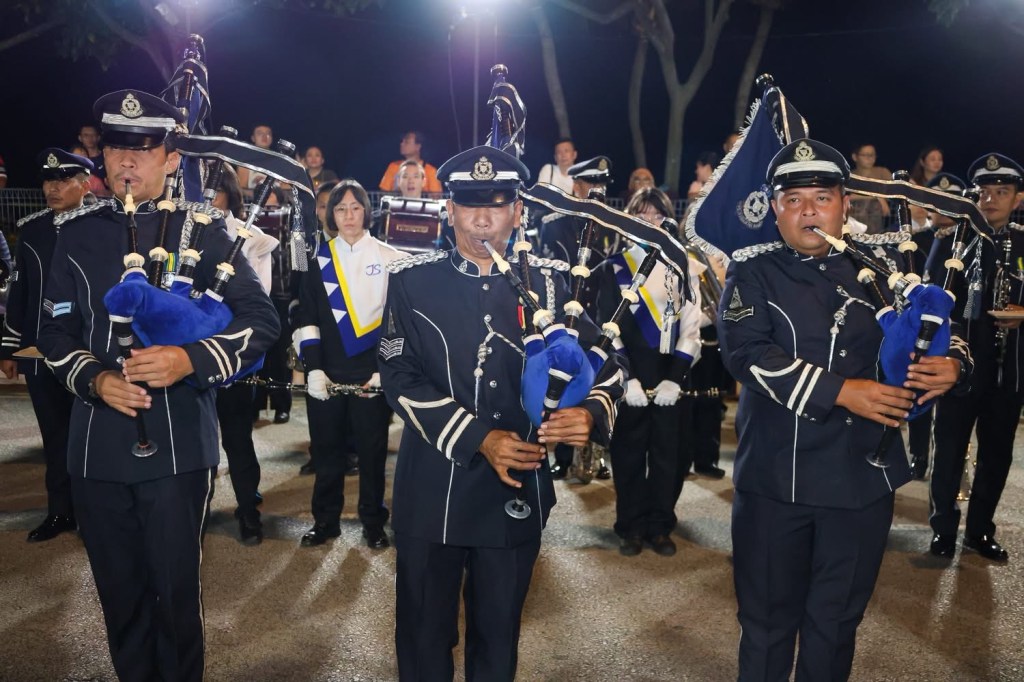

We were on our way ten minutes early, under a fireworks-lit sky, led by a group of VIPs that included the Governor of Penang, the Penang Chief Minister, the Penang Police Chief, the Deputy Inspector-General of Police and the Raja Muda of Kedah, underscoring the event’s significance.
The route ran south from the Queensbay Mall for 4.5 km before the 90 degree left turn onto the ramp to the Sultan Abdul Halim Muadzam Shah Bridge.
The 240 metre cable-stayed main section featuring twin H-shaped pylons is on the island side of the bridge.
We followed the pace car and the group of VIPs over the cable-stayed section and to the middle of the bridge. At that point the pace car and the VIPs pulled over, and the speed ramped up, despite the headwind.
We did a U-turn onto the opposite side of the bridge at the mainland end. The rest stop was 500 metres after the U-turn, at the Toll Plaza Complex. I refilled my bidon with 100 PLUS and ate a banana before heading back to the island. This time with a tailwind helping me.
My rental bike, a Polygon Strattos S7D, served me well. It was well worth the money.

Speaking of being worth the money, the MYR160 it cost me to participate in this event was also well-worth it. The entire event was very well managed. It was a treat to ride on a closed Penang Second Bridge. Then there was the swag. We all got a cycling jersey in our ride packs before the event. We also got a goody bag at the finish. In the goody bag were a finisher’s medal, a finisher’s T-shirt, a hand towel, and food: a curry puff, two egg salad sandwiches, a pack of nasi lemak, a slice of butter cake and a bottle of water.
If that wasn’t enough to tide you over until the Lucky Draw, there were food trucks and food stalls at the finish area. Starbuck’s, Krispy Kreme, a burger stall, an apam balik stall, a fresh fruit stall among them.
Most of the participants stayed for the Lucky Draw at 12:30 am. The prizes incuded a MYR1,000 travel voucher, an Apple iPad, three bicycles, two e-bikes, a scooter, and a motorbike. The Grand prize was a car.

I didn’t leave with a prize. Not that it matters. The experience and the finisher’s medal made the entire weekend worthwhile.
Postscript
- The ETS trip back to KL Sentral the next day ran 20 minutes longer than scheduled. It was 3 hours 55 minutes long. A friend drove from Penang to Kuala Lumpur on the same day. It took her almost 8 hours.
- Click on the logo below to read about Ride Penang.

